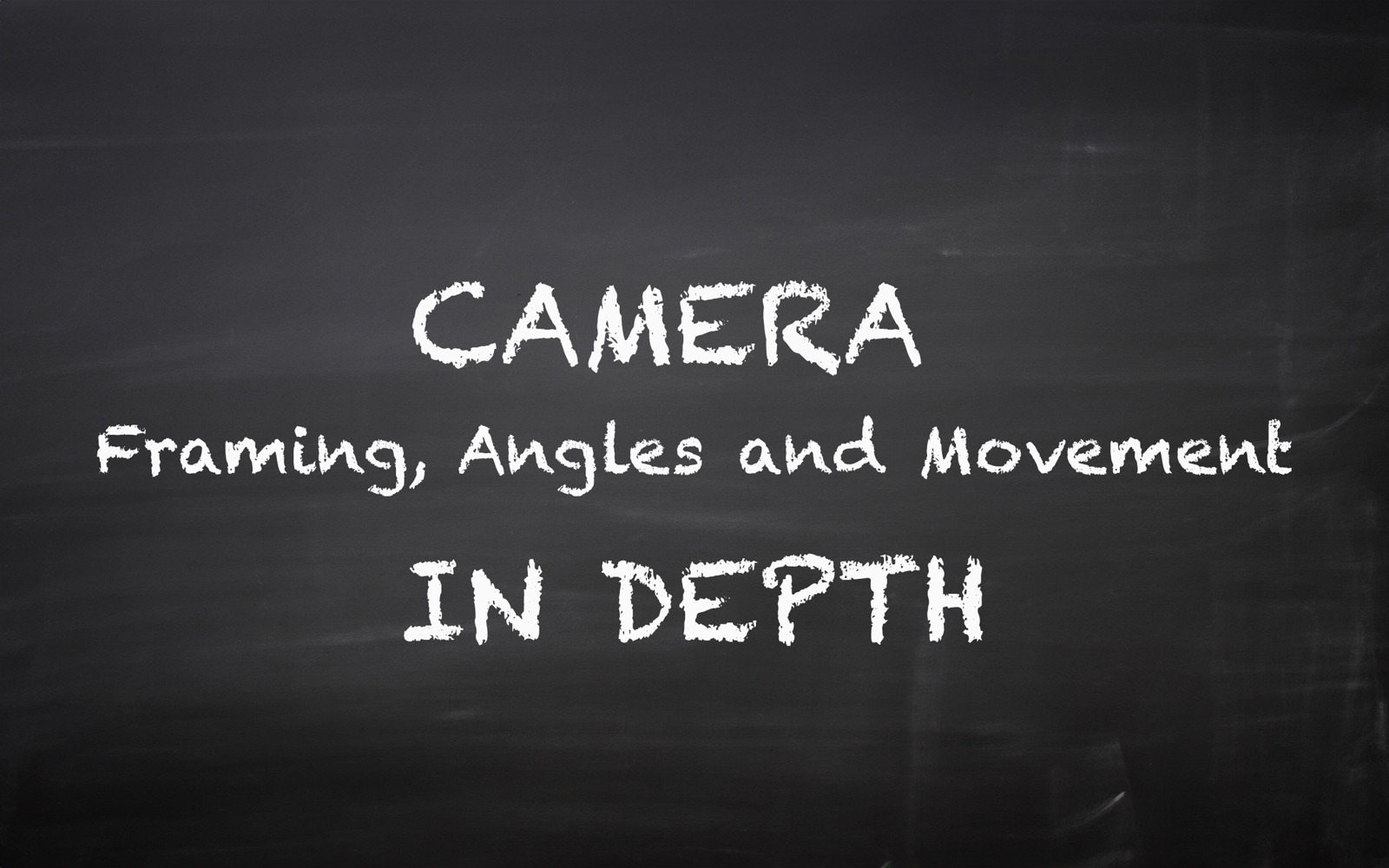For everyone interested in a more in depth guide to camera framing, angles and movement. This article will be really helpful for you. Just use the TOC to navigate and check the example images and the prompts, that were used.
Basics
Lets start with our base prompt and no further adjustments.
To follow the guide you can use the following generation data. The results may vary on the subject. In most cases the corresponding angle can be shown within a shot of a person - otherwise i tried to add matching images.
Positive Prompt: Photo of a 35yo woman, short curly reddish hair, background is a park, highly detailed, Fujifilm XT-4Negative Prompt: Ceramics, digital design, Ugly, blurry, bad quality, low qualitySteps: 20, Sampler: dpmpp_2m_sde_karras, CFG Scale: 6.5, Seed: 641643420027611, Size: 896x1152, Model hash: 74dda471cc, Model: realvisxlV20_v20Bakedvae, Version: ComfyUI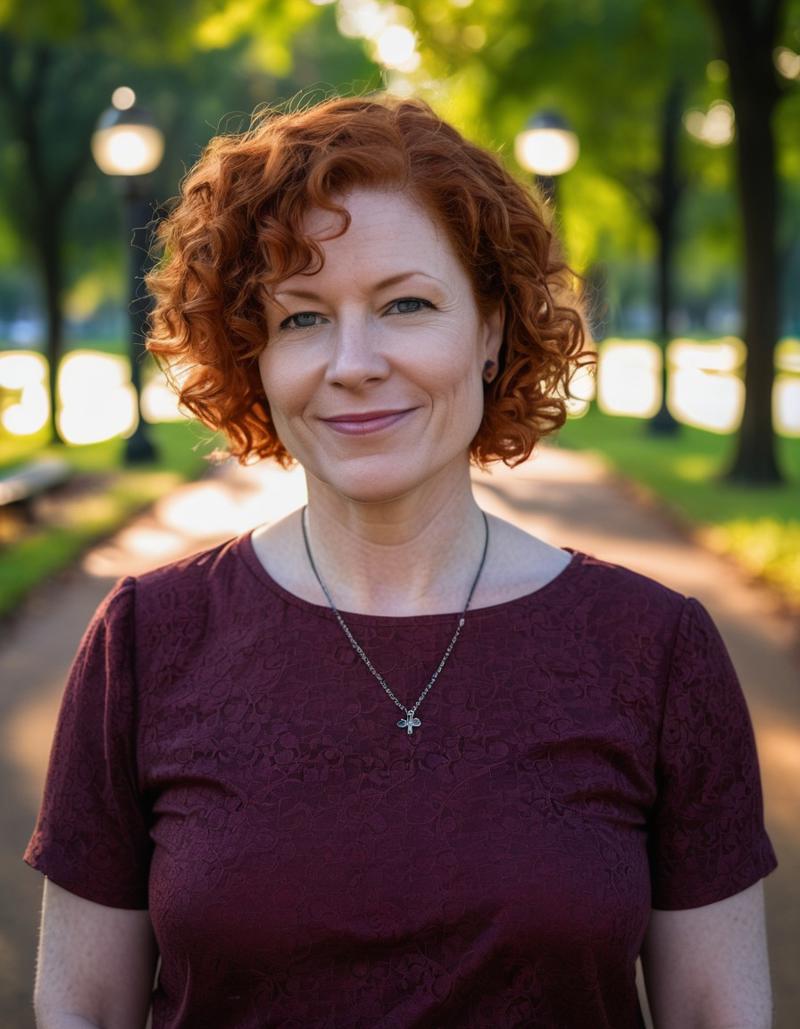
The next section is divided into the parts framing/ distance, angles and camera movement.
Camera framing and camera angle can be combined in a prompt.
[FRAMING], [ANGLE], other parts of the promptCamera Framing/ Distance
Close-Up Shot
A close-up shot is a framing technique where the camera is positioned close to the subject, capturing it in great detail. This shot is used to emphasize specific elements, expressions, or details, creating intimacy and intensifying the viewer's connection with the subject. Close-ups are often employed to convey emotions, highlight facial expressions, or showcase intricate objects. In filmmaking and photography, close-up shots are powerful tools for storytelling, allowing the audience to delve into the nuances and subtleties of a scene. Whether capturing the emotions on an actor's face or the texture of an object, close-ups add depth and emphasis to visual narratives.
Close-Up Shot of a 35yo woman, short curly reddish hair, background is a park, highly detailed, Fujifilm XT-4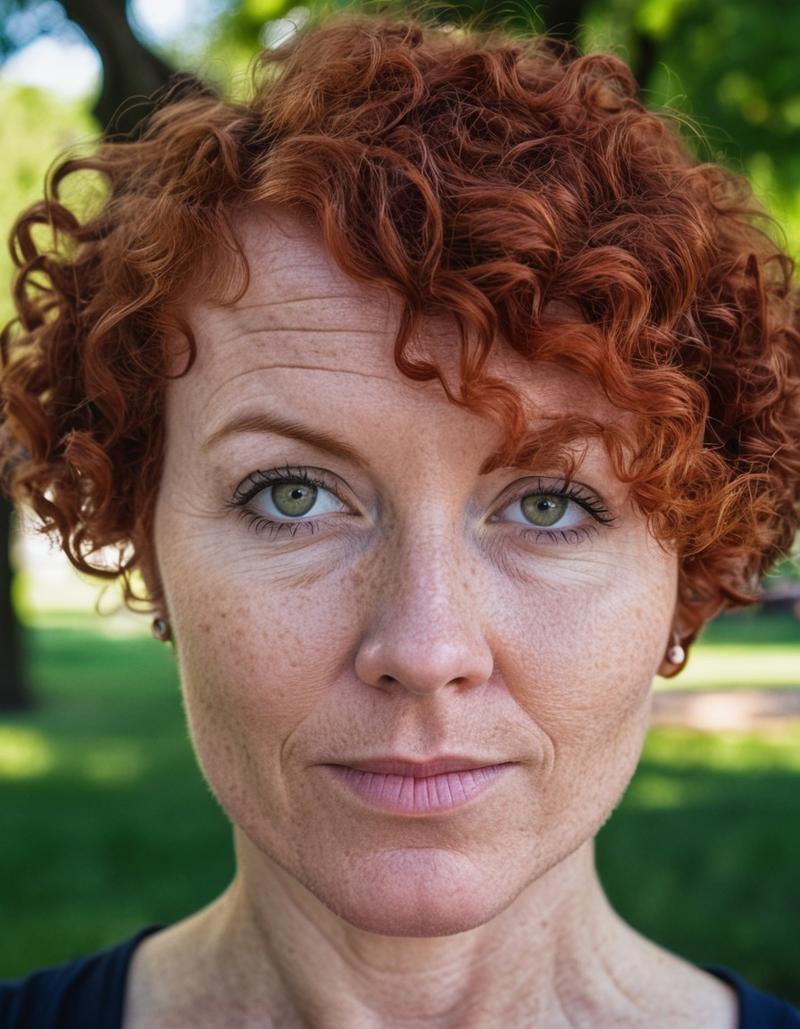
Establishing Shot
An establishing shot is a type of wide shot used at the beginning of a scene or sequence to provide context and set the stage for the upcoming action. Typically captured from a significant distance or a high vantage point, the establishing shot gives viewers a sense of the location, time, and overall atmosphere. It helps orient the audience and establishes the spatial relationships between key elements in the scene. Establishing shots are commonly employed in filmmaking and television to introduce new settings, transitions between locations, or convey changes in time and mood. They play a crucial role in guiding the audience's understanding of the visual narrative.
Establishing Shot Photo of a 35yo woman, short curly reddish hair, background is a park, highly detailed, Fujifilm XT-4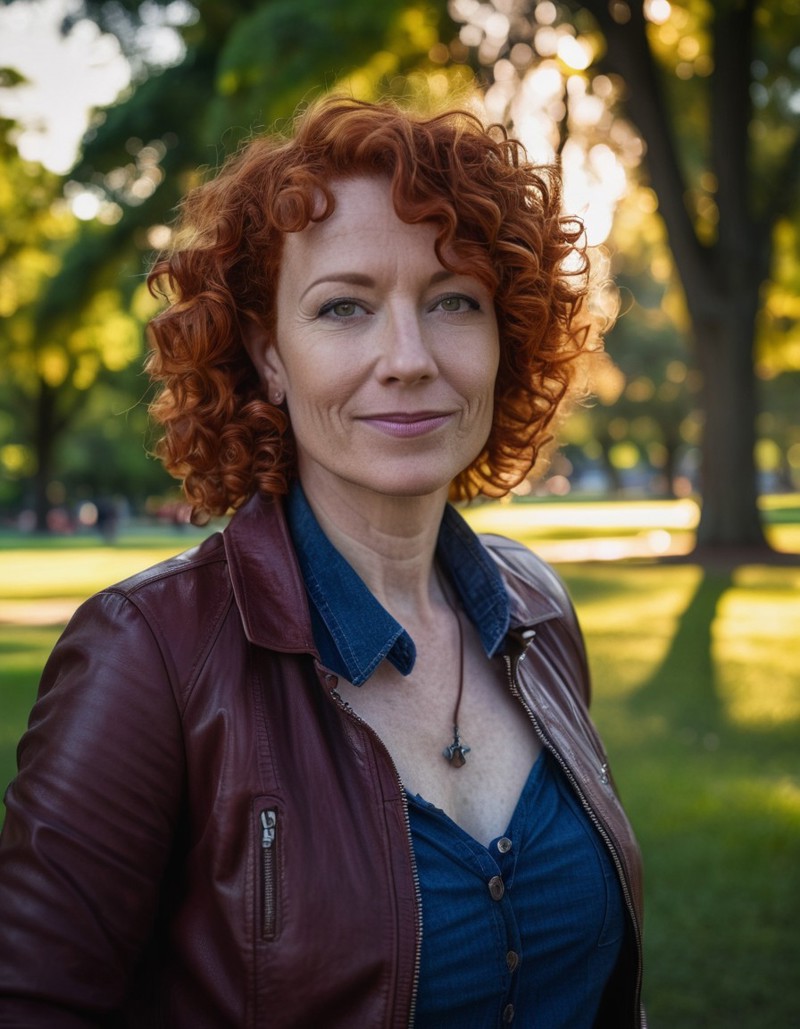
Extreme Close-Up Shot
An extreme close-up shot, often abbreviated as ECU, is a framing technique in cinematography and photography that captures a subject in extreme detail, typically focusing on a specific part of the face or an object. This shot provides an intimate and detailed view, emphasizing texture, expressions, or intricate details that might not be apparent in wider shots.
In an extreme close-up shot of a face, for example, it might focus on the eyes, lips, or even a single tear, intensifying the emotional impact. Extreme close-ups are powerful tools for storytelling, adding emphasis, and creating a heightened sense of intimacy or tension by drawing the viewer's attention to minute details within the frame.
(Extreme close up shot) of the eye of a 35yo woman, short curly reddish hair, background is a park, highly detailed, Fujifilm XT-4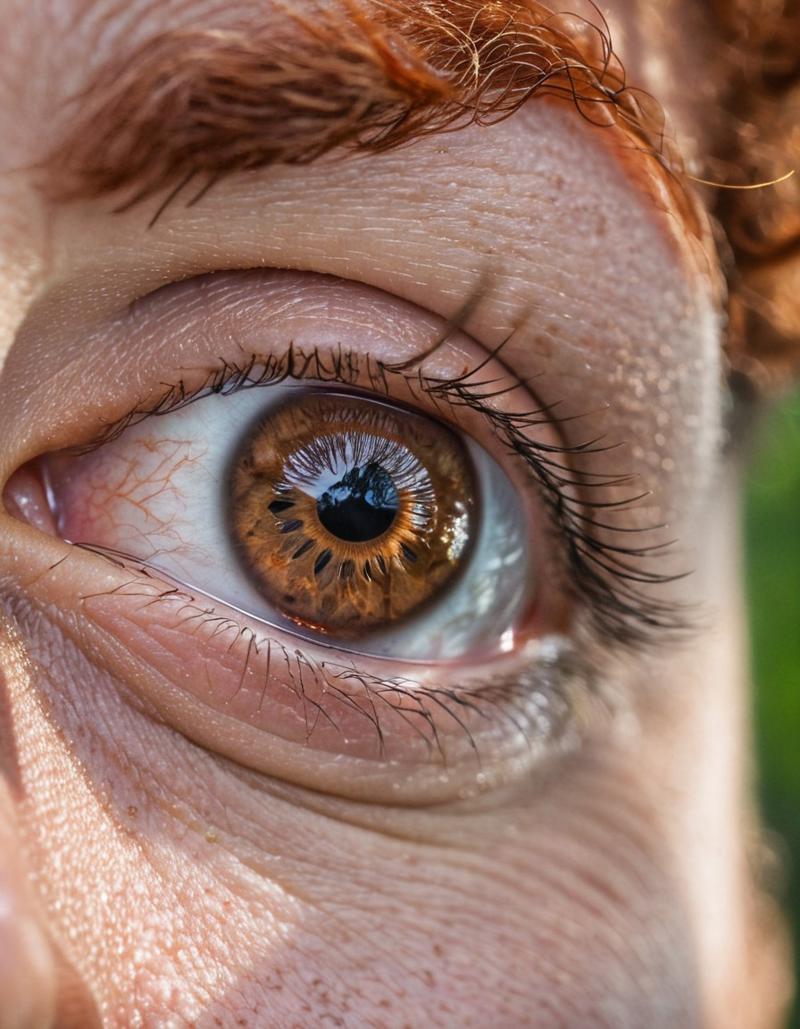
Extreme long shot
An extreme long shot (ELS), also known as a very long shot or extreme wide shot, is a cinematic or photographic framing technique that captures a vast scene from a significant distance. In this shot, the subject appears very small in relation to the overall environment, and the focus is often on showcasing the expansive landscape or setting.
Extreme long shots are frequently used to establish the context, location, or scale of a scene. These shots provide viewers with an overview of the surroundings and are often used at the beginning of a sequence to set the stage or to transition between different locations. In filmmaking and photography, extreme long shots contribute to the visual storytelling by emphasizing the grandeur or isolation of a subject within its larger context.
Extreme long shot, landscape, a 35yo woman with short curly reddish hair, standing in front of a water fall, Fujifilm XT-4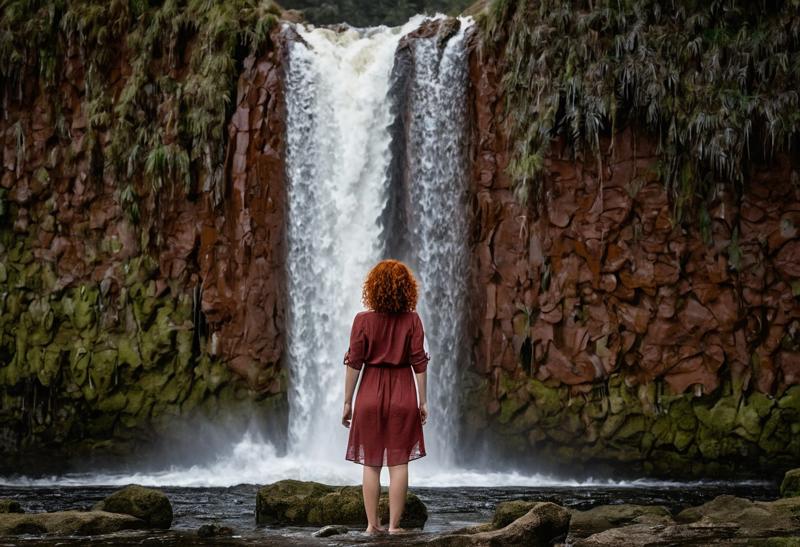
Full body shot
A full-body shot is a photographic or cinematic composition that captures the entire body of a subject within the frame. This shot typically includes the head, torso, legs, and feet, providing a comprehensive view of the person from head to toe. Full-body shots are commonly used in various contexts, including portrait photography, fashion photography, and filmmaking.
In portrait photography, a full-body shot may be used to showcase a person's entire outfit, posture, and overall physical presence. In filmmaking, full-body shots are employed to reveal a character's appearance and body language in a given scene. The framing and composition of a full-body shot allow for a more complete and contextual representation of the subject within the frame.
(Full body shot) of a 35yo woman with short curly reddish hair, wearing red jacket and jeans, red shoes, background is a park, highly detailed, Fujifilm XT-4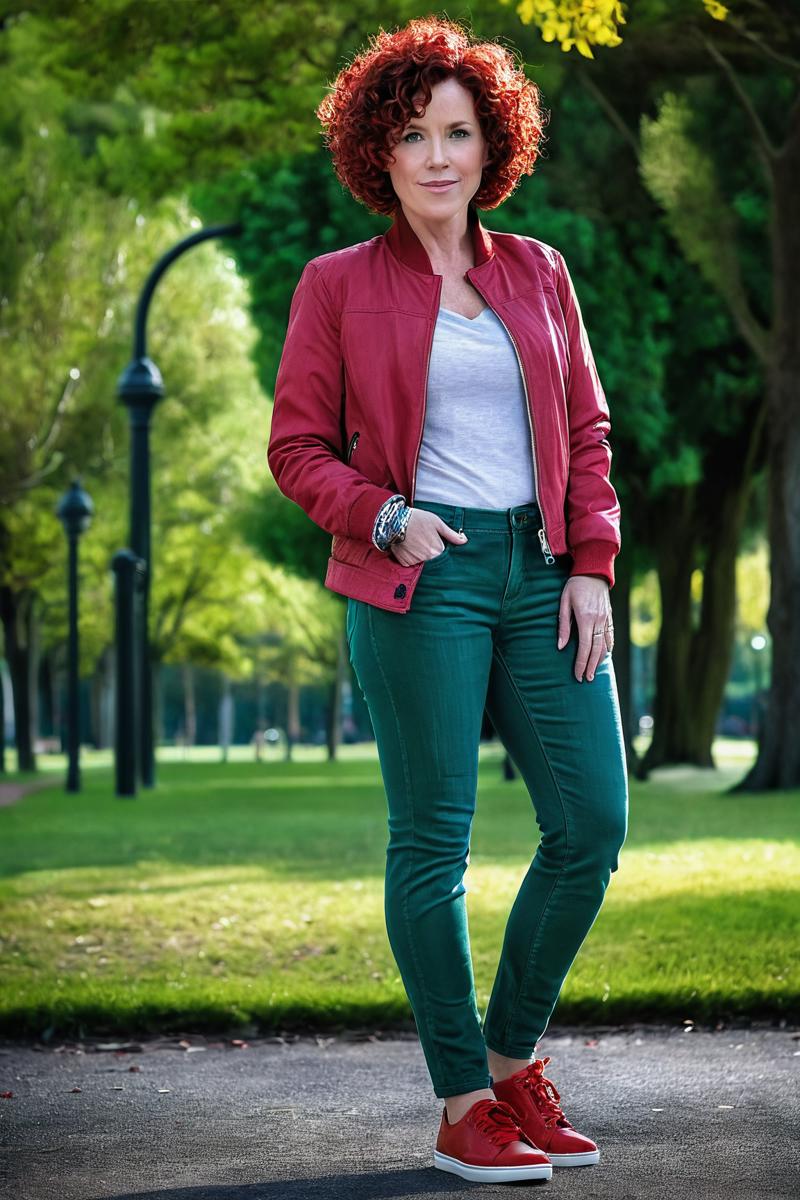
Handheld Shot
A handheld shot is captured by holding the camera in the hands without the use of a stabilizing device, creating a raw and dynamic visual effect. This technique is characterized by its slight camera movements, shakes, and a more immediate, documentary-style feel. Handheld shots are commonly used to convey a sense of immediacy, realism, or to create an intimate connection with the subject. This approach is often seen in documentaries, action sequences, or scenes requiring a spontaneous and unpolished aesthetic. While it introduces a sense of instability, the handheld shot can add authenticity and emotional impact to a visual story, immersing the audience in the unfolding action.
Handheld Shot Photo of a 35yo woman, short curly reddish hair, background is a park, highly detailed, Fujifilm XT-4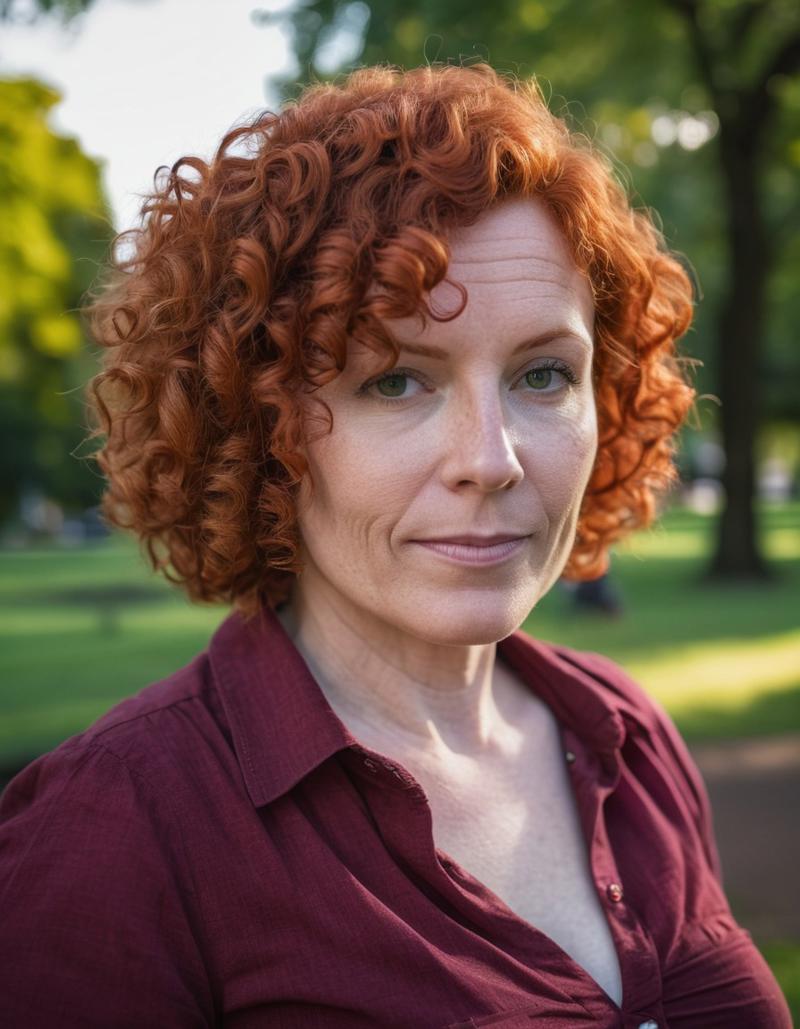
Long shot
A long shot, also known as a wide shot, is captured from a considerable distance, framing the subject or scene to show its entirety within the frame. This shot provides a broad view, often incorporating the surrounding environment, landscapes, or significant elements in the background. Long shots are useful for establishing context, setting, or spatial relationships within a scene. In filmmaking and photography, long shots are versatile, serving different purposes such as emphasizing scale, revealing locations, or capturing large groups of people. This shot is fundamental for creating visual context and allowing the audience to grasp the overall layout of the subject or scene.
Long Shot of a 35yo woman, short curly reddish hair, background is a park, highly detailed, Fujifilm XT-4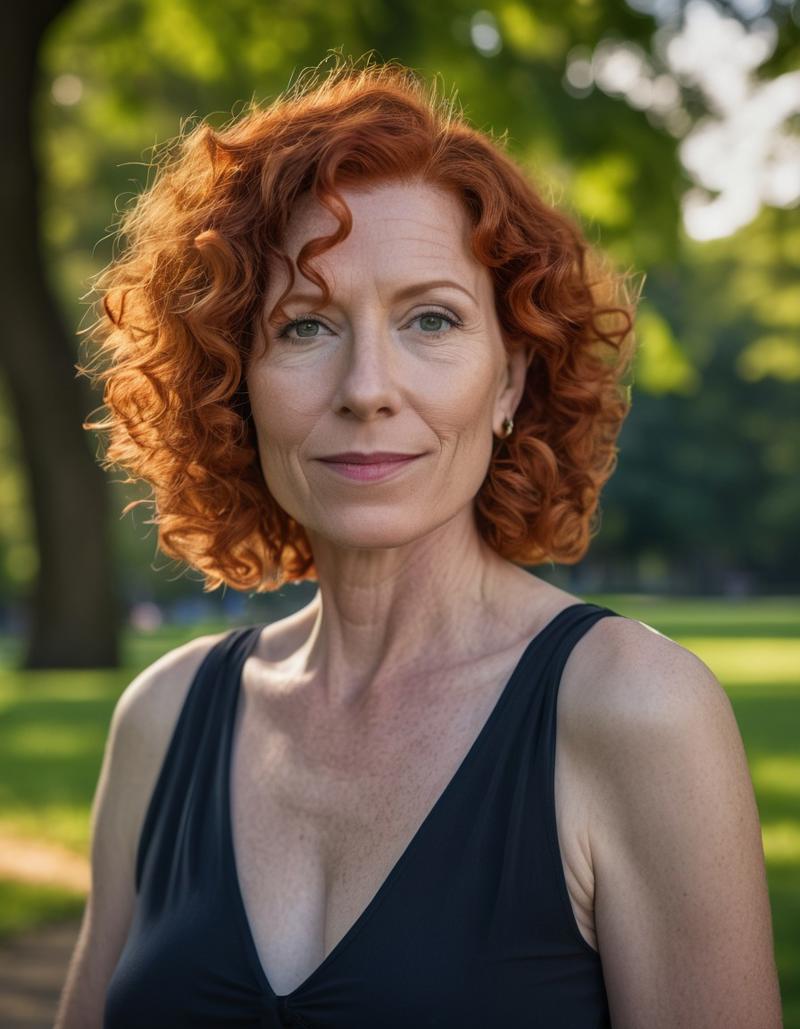
Medium Shot
A medium shot, also known as a mid-shot, frames the subject from approximately the waist up. This framing allows for a closer view of the subject while still including a significant portion of their body. Medium shots are versatile and commonly used in filmmaking and photography to focus on the subject's facial expressions, body language, and interactions without completely excluding the surrounding environment. This shot type strikes a balance between the intimacy of a close-up and the context provided by a wide shot. It's often employed in dialogue scenes, interviews, and moments where capturing both the subject's emotions and their physical presence is important.
Medium Shot of a 35yo woman, short curly reddish hair, background is a park, highly detailed, Fujifilm XT-4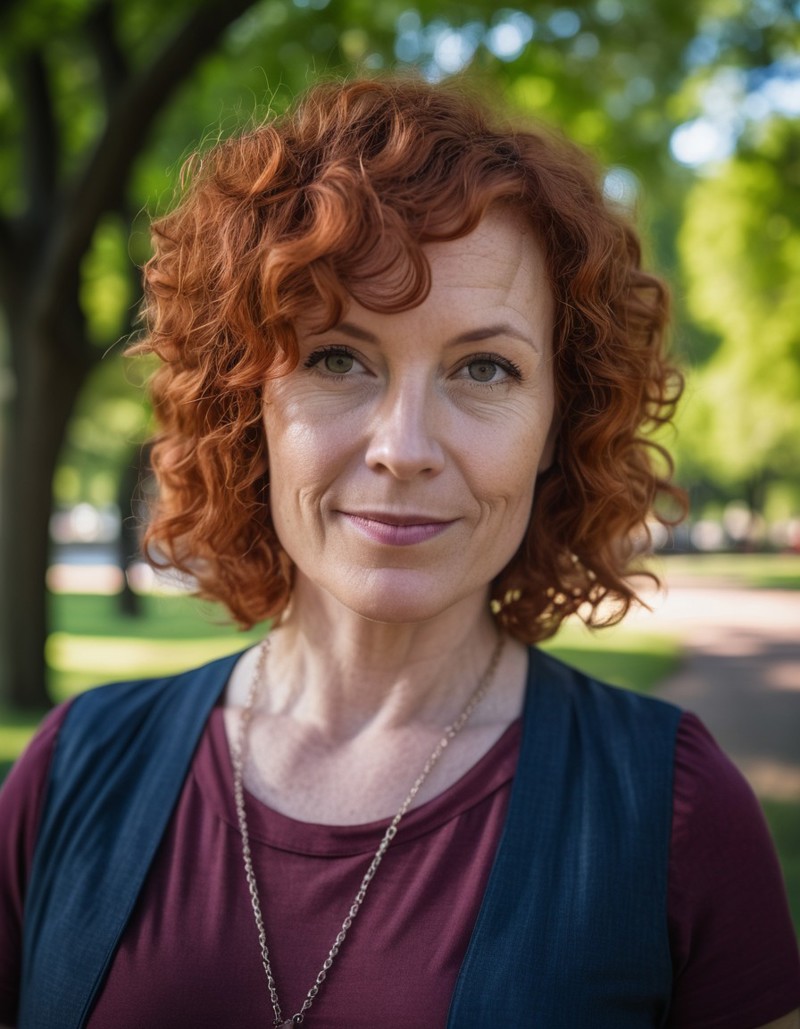
Static Shot
A static shot, also known as a fixed or stationary shot, is captured with a motionless camera, maintaining a stable and unmoving composition. This technique is characterized by its lack of camera movement, providing a steady and controlled visual perspective. Static shots are often employed to convey stability, focus attention on a specific subject, or create a calm and composed visual atmosphere. This approach is common in portrait photography, interviews, and scenes where a sense of stillness or contemplation is desired. While dynamic camera movements can add excitement, a static shot can offer simplicity and clarity, allowing the viewer to concentrate on the content within the frame.
Static Shot of a 35yo woman, short curly reddish hair, background is a park, highly detailed, Fujifilm XT-4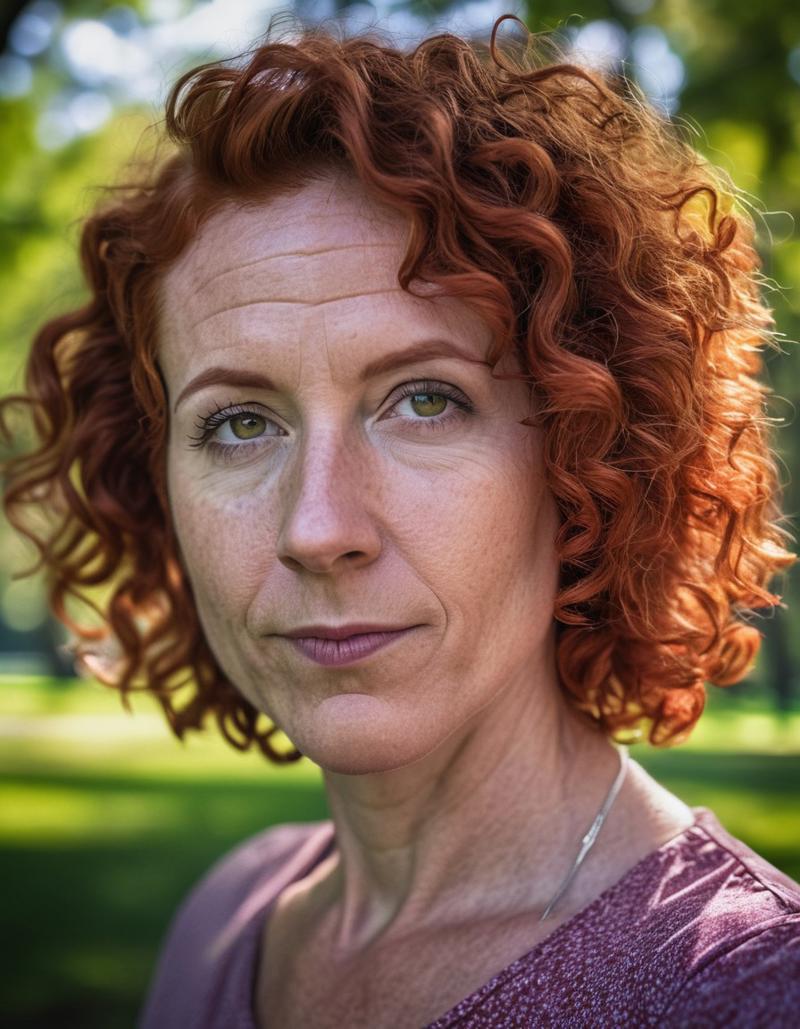
Wide Shot
A wide shot, also known as a long shot or establishing shot, is captured with the camera positioned at a significant distance from the subject, providing a broad view of the entire scene. This shot is often used to establish context, showcase the setting, or introduce key elements within the frame. Wide shots are valuable in filmmaking and photography for capturing expansive landscapes, large groups of people, or portraying the overall environment. They set the stage for storytelling, offering viewers a sense of place and scale before zooming in on more detailed shots. Wide shots are fundamental in creating visual context and situating the audience within the narrative.
Wide Shot of a 35yo woman, short curly reddish hair, background is a park, highly detailed, Fujifilm XT-4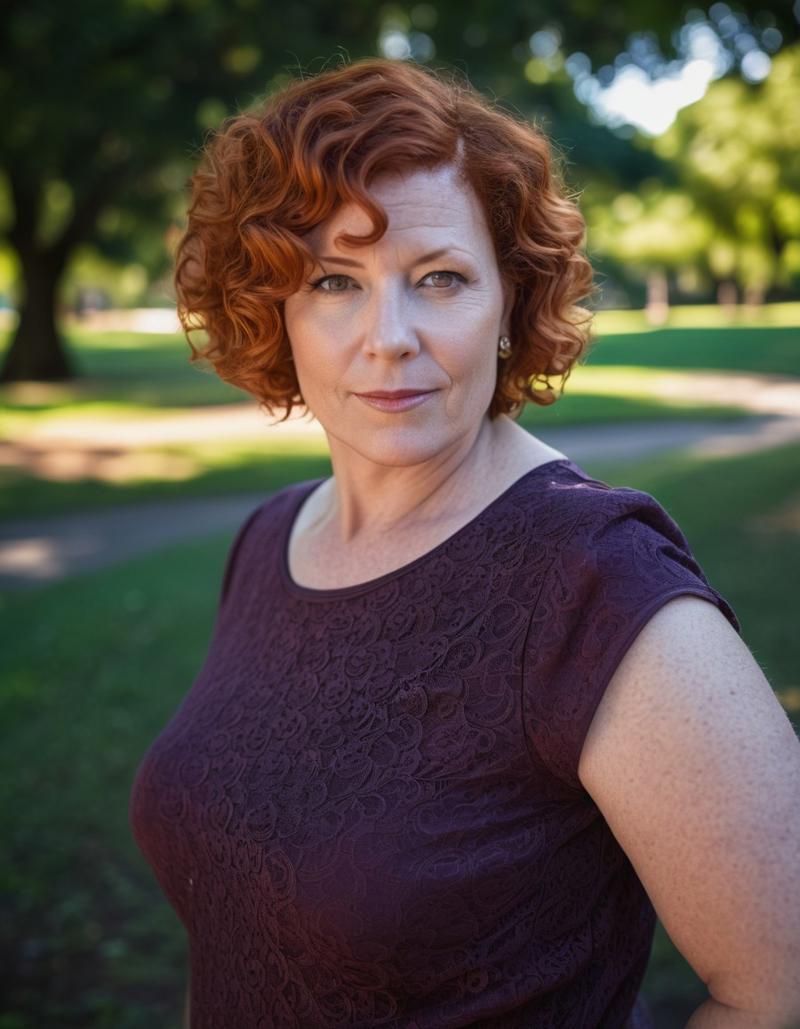
Camera Angles/ Position
Aerial Shot
An aerial shot is captured from an elevated position, often using aircraft such as helicopters, drones, or airplanes. This perspective offers a unique and expansive view from above, showcasing landscapes, cityscapes, or events with a comprehensive and sometimes dramatic visual impact. Aerial shots are widely utilized in photography, filmmaking, and videography to provide a bird's-eye view of scenes, revealing patterns, structures, and relationships that might be less apparent from ground level. Whether capturing breathtaking natural landscapes, urban environments, or dynamic action sequences, aerial shots offer a compelling and visually stunning way to present subjects with a sense of scale and context.
Aerial Shot of typical landscape in norway, highly detailed, Fujifilm XT-4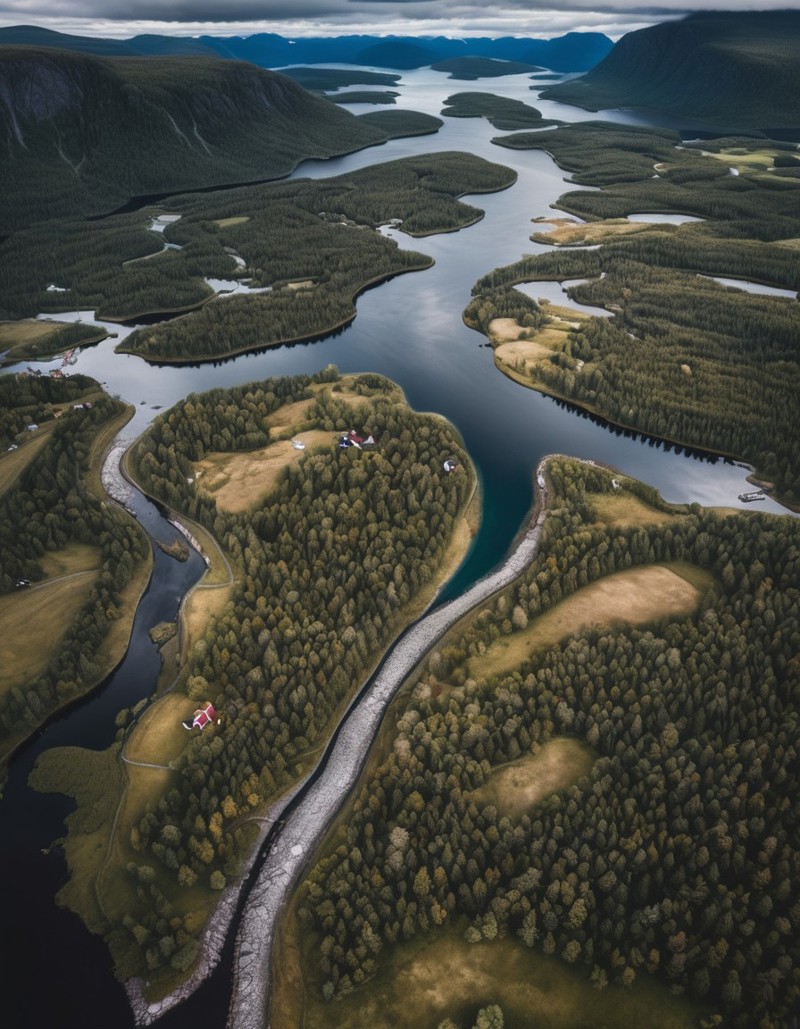
Bilaterally symmetrical
A bilaterally symmetrical shot is a cinematographic or photographic composition where the elements in the frame are mirrored on either side of a central axis. In other words, the left and right sides of the frame are symmetrical, creating a balanced and harmonious visual arrangement.
This symmetrical approach is often used for artistic or aesthetic purposes. It can convey a sense of order, stability, and formal beauty. Bilaterally symmetrical shots are common in architecture photography, where buildings or structures exhibit symmetrical designs. Filmmakers and photographers use this technique to create visually striking and pleasing compositions, drawing attention to the symmetry and balance of the subject within the frame.
Bilaterally symmetrical shot, a 35yo woman, short curly reddish hair, background is a park, sunset, highly detailed, Fujifilm XT-4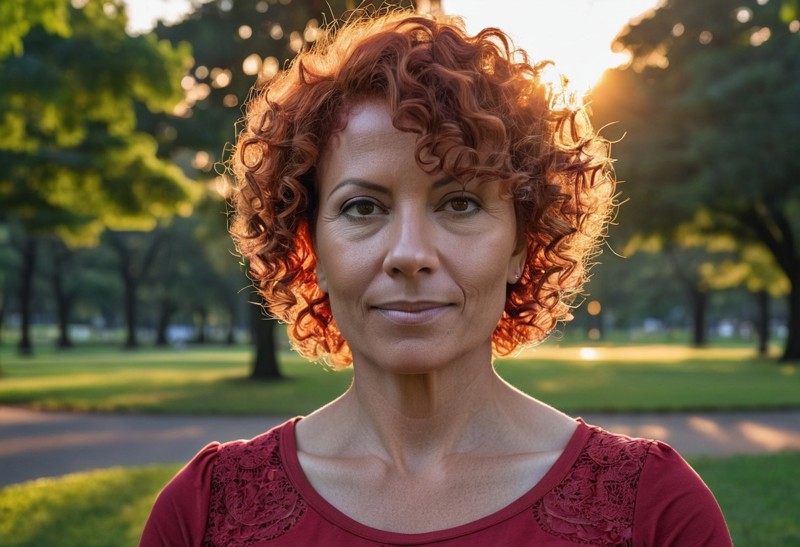
Bird's-Eye View
A bird's-eye view is a perspective captured from a high vantage point, looking downward towards the subject or scene. This viewpoint simulates the way a bird might see the world from the sky. Bird's-eye view shots are often taken from elevated positions, such as tall buildings, cliffs, or aerial platforms like drones or helicopters.
This perspective provides a comprehensive and unique outlook, offering a clear view of the layout, patterns, and relationships within a scene. Bird's-eye view shots are commonly used in photography, filmmaking, and cartography to illustrate landscapes, cityscapes, and various environments, providing viewers with a detailed understanding of the spatial elements and overall composition of the subject.
Bird's-Eye View of a island in norway, highly detailed, Fujifilm XT-4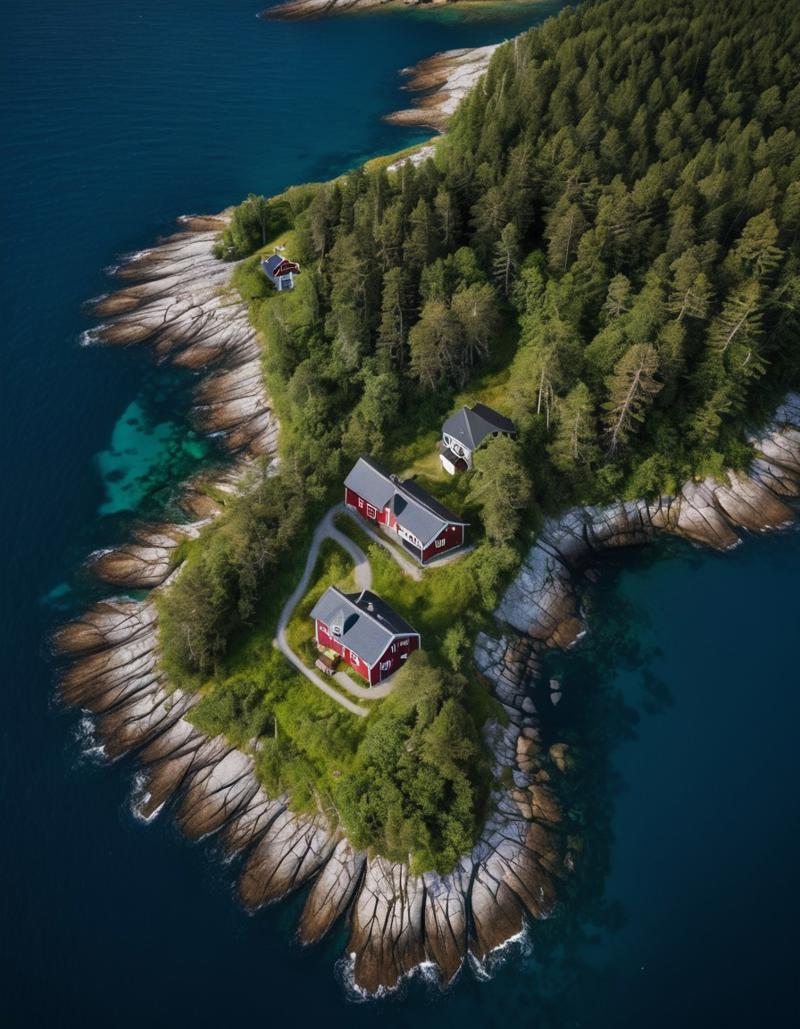
Dutch Angle
The Dutch Angle, also known as a canted angle or oblique angle, is a photographic technique where the camera is deliberately tilted to create a sense of imbalance or unease in the composition. This technique is characterized by a slanted horizon, resulting in diagonal lines and skewed perspectives. It is often used to evoke tension, disorientation, or to convey a sense of psychological unease in visual storytelling. The Dutch Angle is a powerful tool in photography and filmmaking, allowing artists to add a dynamic and unconventional element to their images, influencing the viewer's emotional response to the scene.
Dutch angle photo of a 35yo woman, short curly reddish hair, background is a park, highly detailed, Fujifilm XT-4
Fish eye
A fish-eye shot is captured using a fisheye lens, which has an extremely wide-angle field of view, typically exceeding 180 degrees. This lens creates a distorted, spherical perspective, bending straight lines and capturing a vast scene in a single frame. Fish-eye shots are known for their unique and exaggerated visual effects, making them popular in creative and artistic photography. They are often employed to capture expansive landscapes, architecture, or to create surreal and immersive compositions. The distortion adds a whimsical or dramatic touch to the images, offering a distinctive and memorable look to the photographs.
Fisheye Photo of a 35yo woman, short curly reddish hair, background is a park, highly detailed, Fujifilm XT-4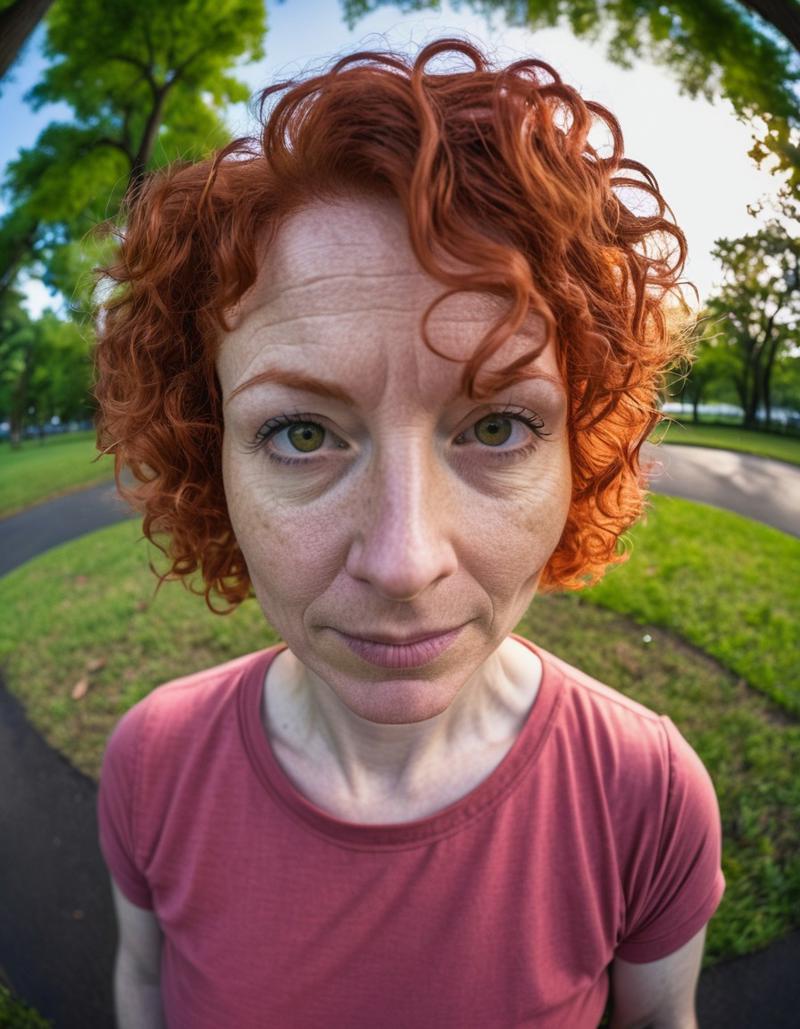
From above
A "from above" shot, also known as an overhead or top-down shot, is captured by positioning the camera directly above the subject or scene being photographed. This perspective provides a bird's-eye view, offering a unique and comprehensive look at the subject from an elevated position. From above shots are commonly used to showcase patterns, symmetry, and spatial relationships. In food photography, for instance, it highlights the arrangement of dishes, while in urban scenes, it captures the layout of streets and buildings. This perspective is versatile, providing a fresh and engaging way to present subjects by emphasizing their shapes and organization from a different vantage point.
From above Photo of a 35yo woman, short curly reddish hair, background is a park, highly detailed, Fujifilm XT-4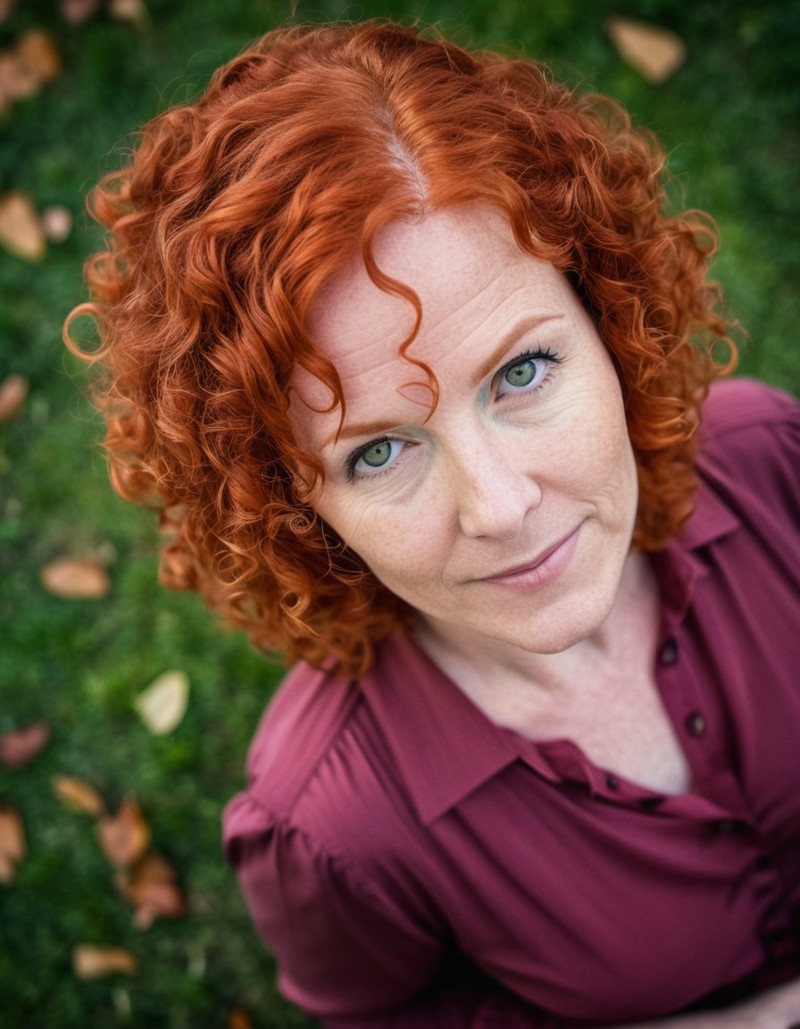
From behind
A "from behind" shot is taken with the camera positioned behind the subject, capturing a view of their back. This perspective is often employed to create a sense of mystery, anticipation, or to highlight the subject's surroundings. In portrait photography, shooting from behind can add an element of intrigue, allowing viewers to wonder about the subject's thoughts or actions. In cinematic storytelling, it's frequently used to build suspense or reveal information gradually. This angle can also emphasize the subject's posture, clothing details, or interactions with the environment. Overall, a "from behind" shot provides a unique perspective that can evoke various emotions and narratives.
From behind Photo of a 35yo woman, short curly reddish hair, background is a park, highly detailed, Fujifilm XT-4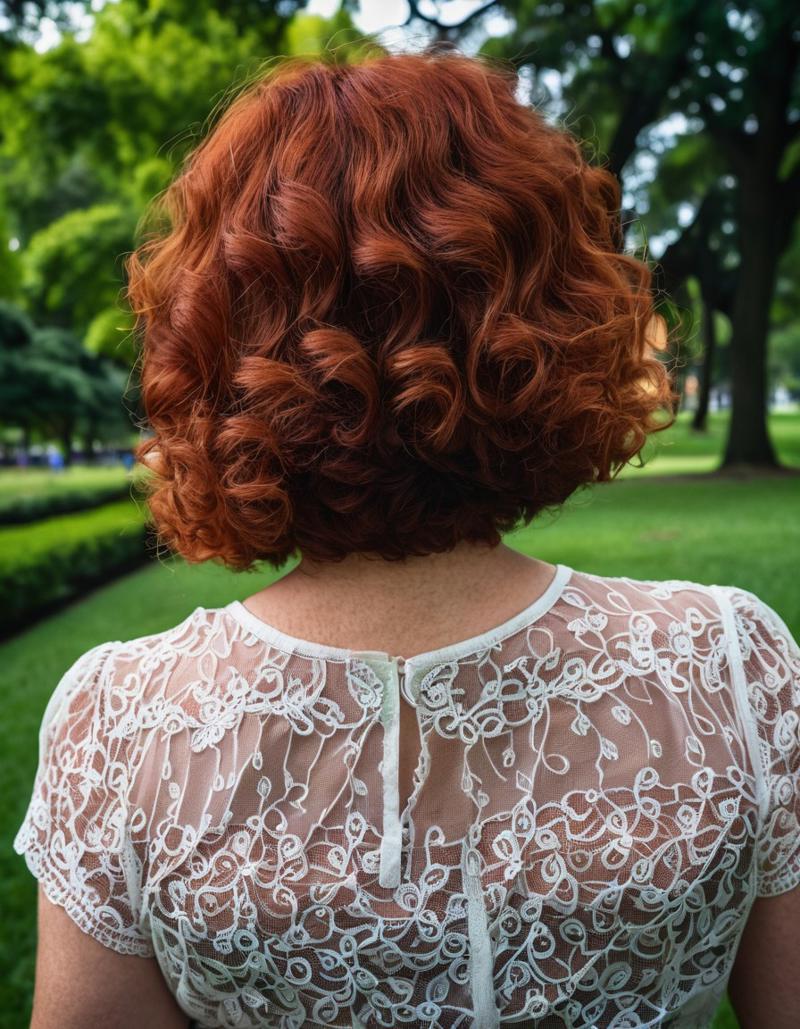
From below
A "from below" shot is captured by positioning the camera below the subject, looking upward. This perspective is often used to emphasize the subject's stature, power, or to create a dramatic and heroic effect. In portrait photography, shooting from below can make the subject appear larger than life, showcasing their strength or authority. In architectural photography, this angle can highlight tall structures, making them seem imposing and grand. Additionally, a "from below" shot is commonly used in filmmaking to portray characters in moments of triumph or to create a visually dynamic composition. It adds a sense of elevation and impact to the subject being photographed.
From below Photo of a 35yo woman, short curly reddish hair, background is a park, highly detailed, Fujifilm XT-4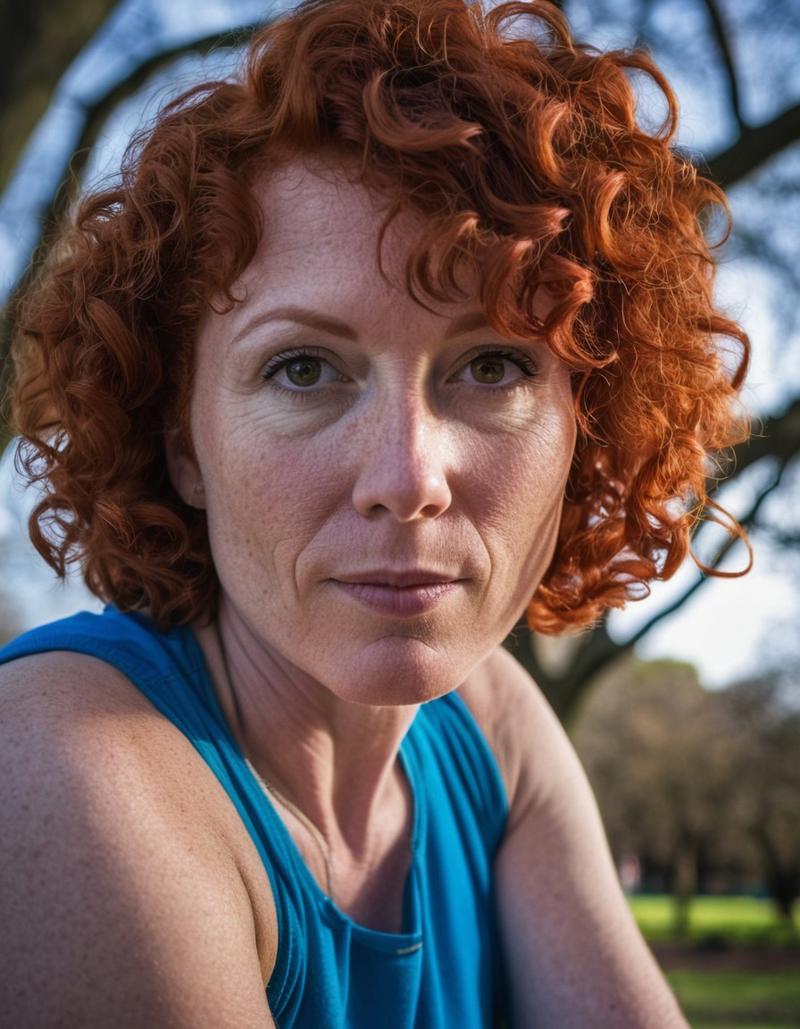
High Angle Shot
A high-angle shot is captured with the camera positioned above the eye level of the subject, looking downward. This technique is employed to create a specific visual effect, often emphasizing vulnerability, submission, or insignificance of the subject. From a higher vantage point, subjects appear smaller and less powerful, and the surroundings may become more dominant. High-angle shots are commonly used in filmmaking and photography to convey a sense of weakness, dependency, or to provide an overview of a scene. This camera angle alters the viewer's perception, influencing the emotional tone and narrative context by framing the subject from above.
High Angle Shot of a 35yo woman, short curly reddish hair, background is a park, highly detailed, Fujifilm XT-4
Low Angle Shot
A low-angle shot is captured with the camera positioned below the eye level of the subject, looking upward. This technique is often employed to emphasize the power, authority, or dominance of the subject within the frame. By shooting from a lower angle, subjects appear larger and more imposing, and the viewer is given a unique and sometimes dramatic perspective. Low-angle shots are commonly used in filmmaking and photography to evoke a sense of strength, heroism, or to accentuate the grandeur of architectural structures. This camera angle adds visual interest and can influence the emotional impact of the scene by altering the viewer's perception of the subject's presence.
Low Angle Shot of a 35yo woman, short curly reddish hair, background is a park, highly detailed, Fujifilm XT-4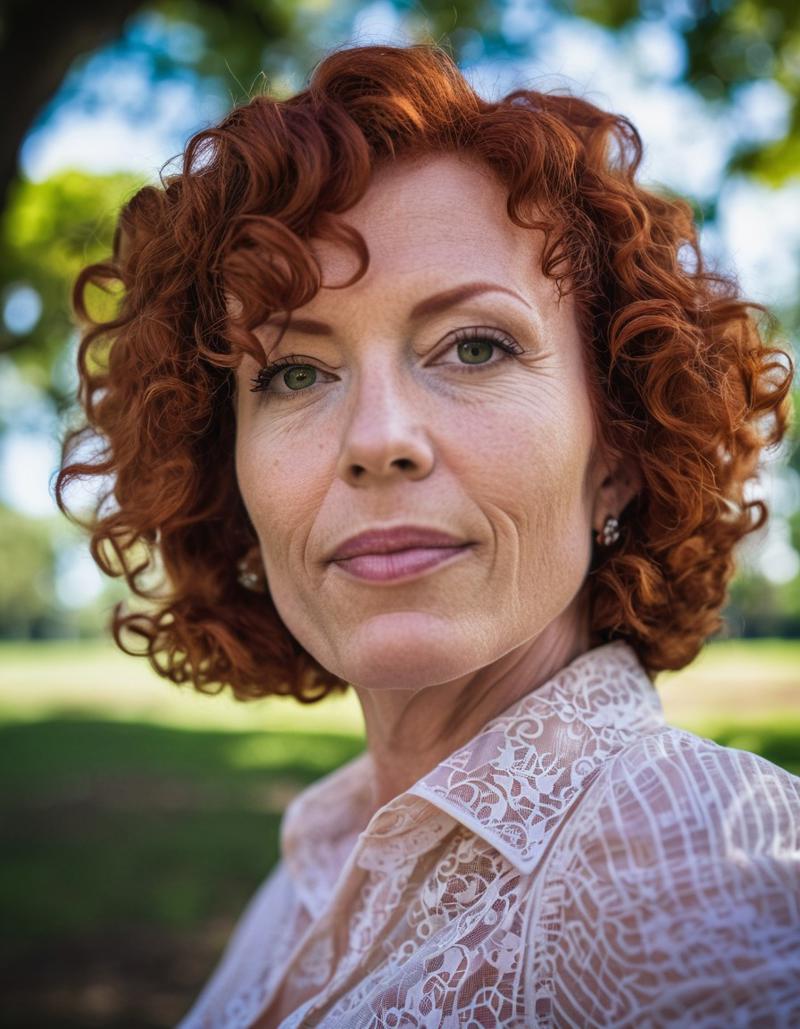
Overhead shot
An overhead shot, also known as a top-down or bird's-eye view, is captured by positioning the camera directly above the subject or scene. This perspective provides a comprehensive view looking down, offering a unique and often detailed perspective. Overhead shots are commonly used to showcase patterns, arrangements, or to emphasize the layout of subjects. In food photography, for instance, it captures the presentation of dishes, while in scenes with people, it can highlight interactions or group dynamics. This angle is versatile, providing a distinct vantage point that allows photographers to explore and convey the subject's details and relationships in a visually engaging manner.
Overhead shot of a 35yo woman, short curly reddish hair, background is a park, highly detailed, Fujifilm XT-4
Reverse Shot
A reverse shot is a cinematic technique where the camera angle changes to show the perspective from the opposite side of the previous shot. This technique is commonly used in filmmaking to depict the reaction or point of view of another character or element in a scene. For example, in a dialogue sequence, the camera may initially focus on one character speaking, and then it cuts to a reverse shot to reveal the facial expressions or actions of the other character listening or reacting. The reverse shot is a fundamental tool in film editing, providing a dynamic way to present different viewpoints and enhance the storytelling experience.
Reverse shot photo of a 35yo woman, short curly reddish hair, background is a park, highly detailed, Fujifilm XT-4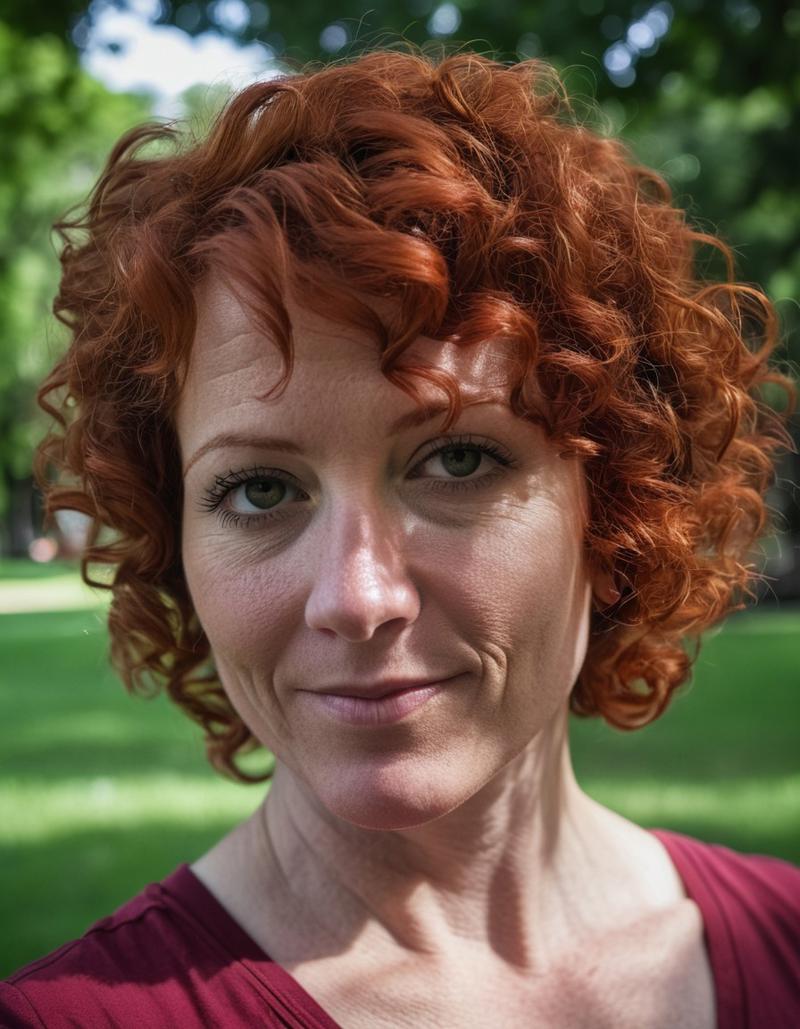
Side view
A side view, also known as a profile view, is a perspective that captures a subject or scene from the side, highlighting the profile or lateral aspect. This type of view is often used in photography and filmmaking to showcase the outline and features of a subject from a specific angle.
In a side view, details such as facial expressions, body contours, or the shape of objects are emphasized, providing a distinct perspective. This angle is commonly employed in various contexts, from capturing the profile of a person in portraiture to showcasing the side profile of a car in automotive photography. The side view offers a unique and visually interesting way to present subjects, revealing different aspects that might not be as noticeable in a frontal or rear view.
Side view a 35yo woman, short curly reddish hair, background is a park, highly detailed, Fujifilm XT-4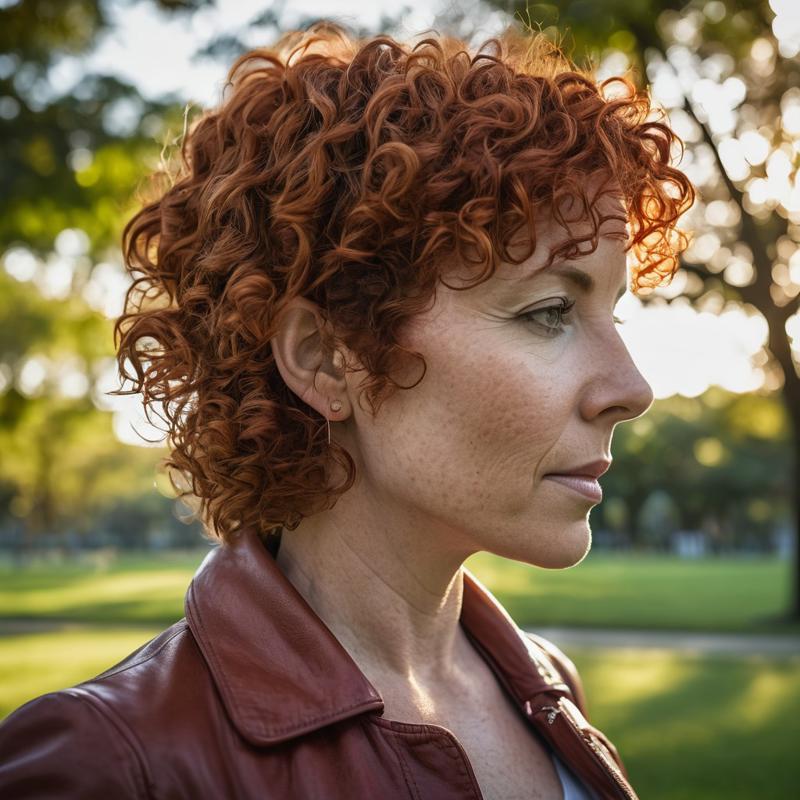
Side view (long shot)
Long shot side view of a 35yo woman with short curly reddish hair, standing in front of a water fall, Fujifilm XT-4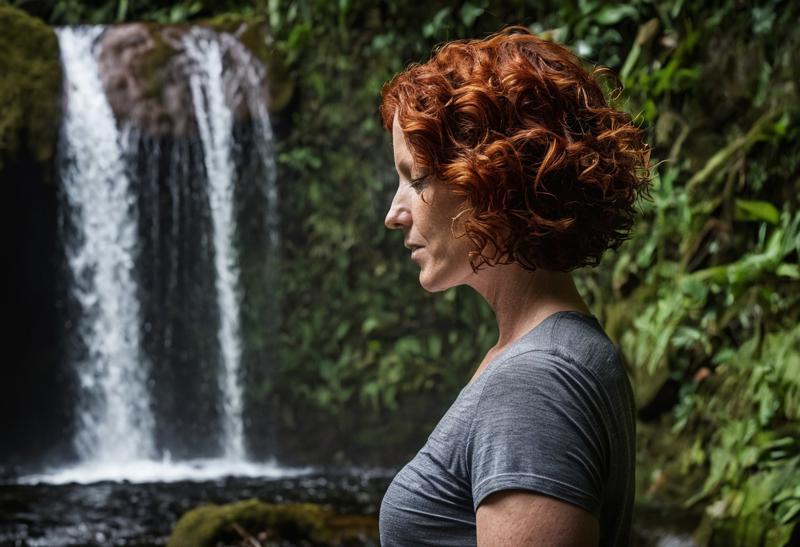
Upside down
An upside-down shot is captured by flipping the camera or the footage during filming or post-production, presenting the scene or subject with an inverted orientation. This technique is unconventional and is typically used for artistic or symbolic purposes rather than for straightforward representation. Upside-down shots can evoke a sense of disorientation, surrealism, or dreamlike aesthetics, challenging the viewer's perception of reality. In filmmaking and photography, this creative choice is employed to convey a specific mood or to emphasize the unconventional nature of a scene, adding a layer of abstraction and intrigue to the visual storytelling.
Upside-down photo of a 35yo woman, short curly reddish hair, background is a park, highly detailed, Fujifilm XT-4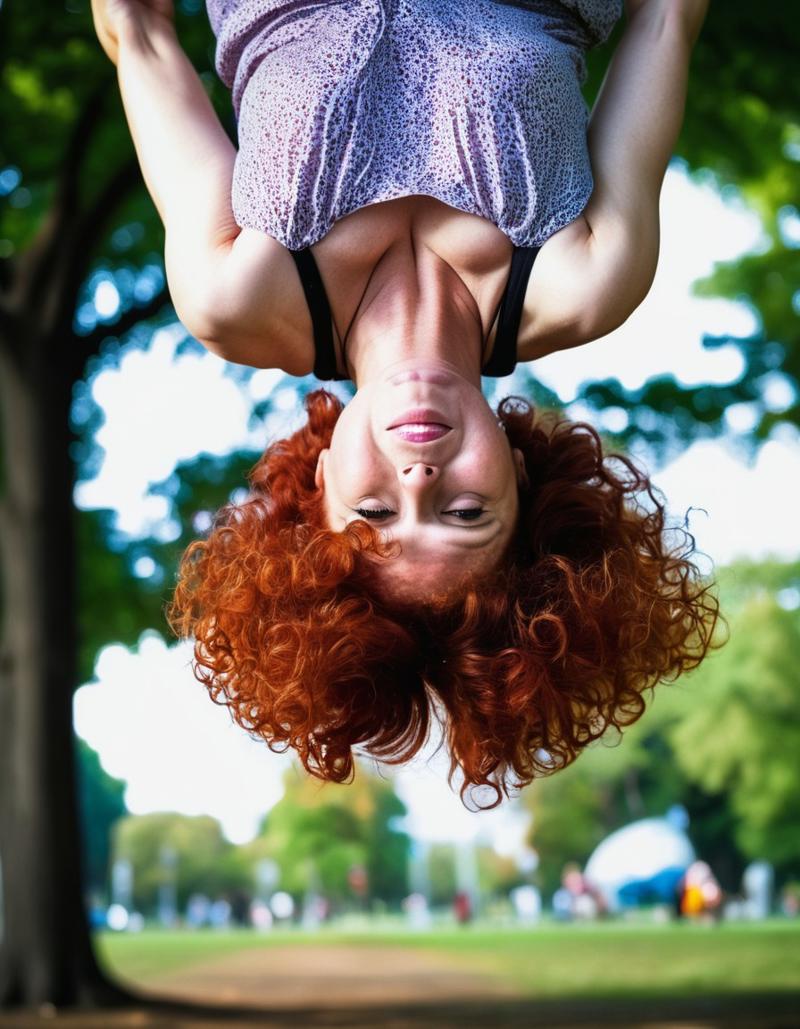
Vanishing point
The vanishing point is a critical concept in perspective and composition in visual arts, particularly in photography. It refers to the point on the horizon where parallel lines appear to converge or "vanish." When capturing a scene, lines that are parallel in reality, such as railroad tracks or buildings, seem to meet at a single point on the horizon line in the image. The vanishing point adds depth and a sense of distance to the composition, creating a dynamic and realistic portrayal of three-dimensional space. This technique is widely used to guide the viewer's gaze and enhance the visual impact of a photograph by conveying depth and spatial relationships within the frame.
Vanishing point photo of a lighthouse at the end of a path, highly detailed, Fujifilm XT-4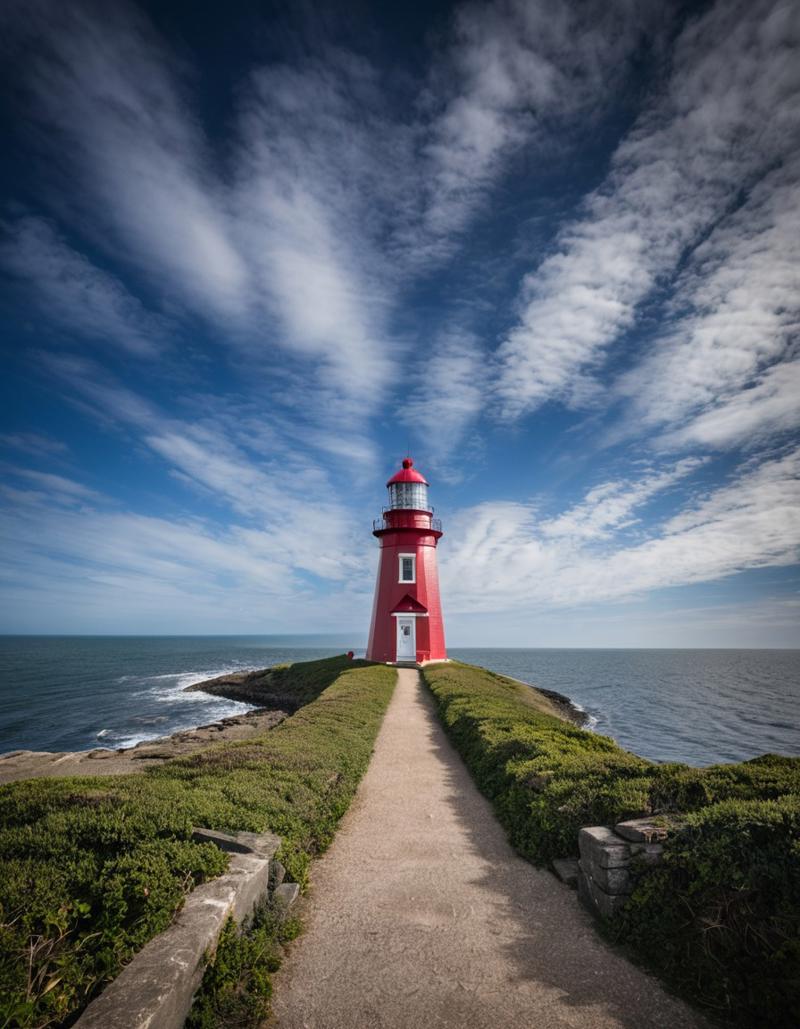
Combine camera framing and angle
Combining the two elements can improve the output of your images. Sometimes you need to add some more weight to specific keywords to get the desired effect.
Close-up shot + bilaterally symmetrical
Close-up shot, Bilaterally symmetrical, a 35yo woman, short curly reddish hair, background is a park, sunset, highly detailed, Fujifilm XT-4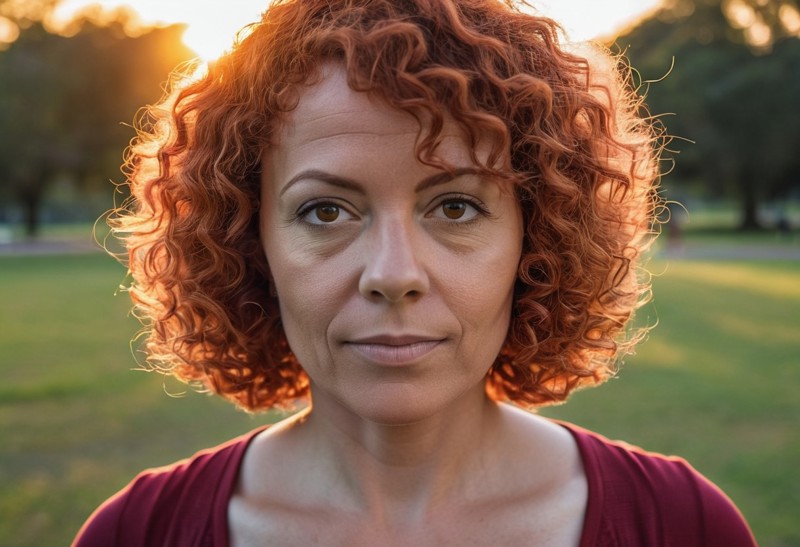
Full body shot + Side view
Full body shot, Side view, a 35yo woman, short curly reddish hair, standing in a park, landscape, sunset, highly detailed, Fujifilm XT-4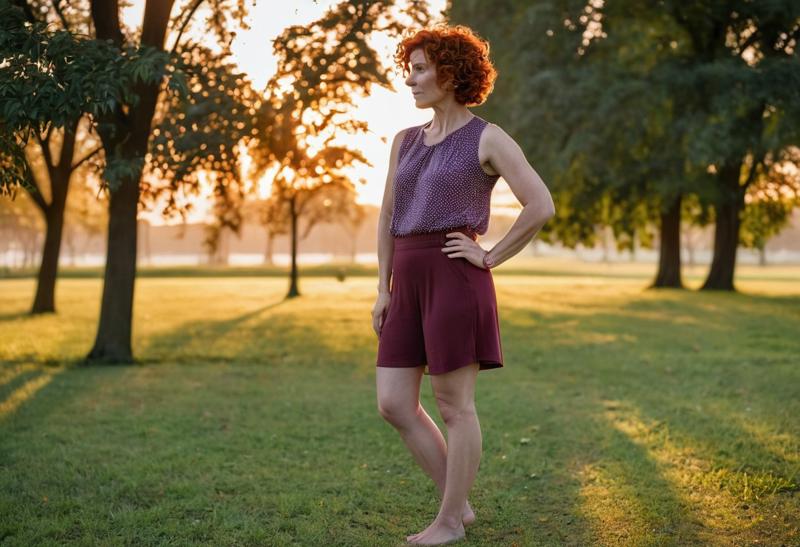
Full body shot + From below
Full body shot, (from above:1.35), a 35yo woman, short curly reddish hair, standing in a park, landscape, sunset, highly detailed, Fujifilm XT-4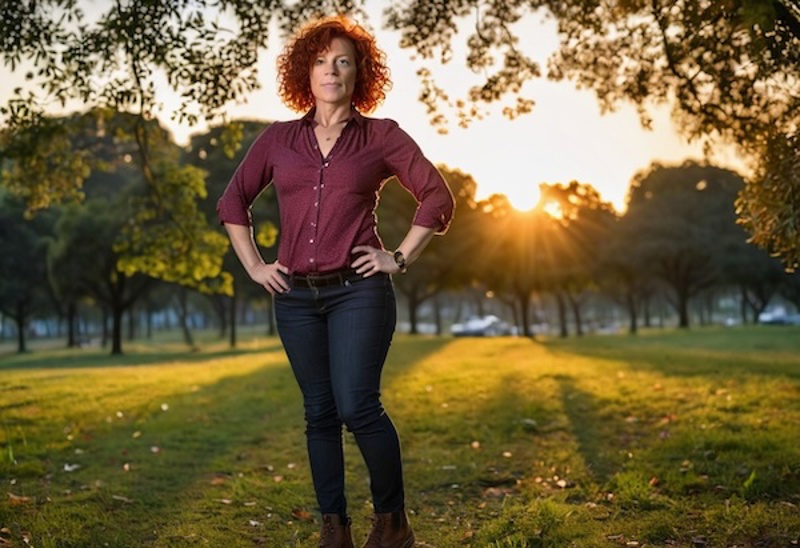
Camera Movement
In most cases, this is often tied to a direct movement of the camera. So this section is mostly descriptional and won't show lots of examples.
Dolly shot
A dolly shot is a cinematographic technique where the entire camera is mounted on a wheeled platform called a dolly. This platform allows for smooth and controlled movement, either towards or away from the subject, or laterally across a scene. The dolly shot provides a dynamic perspective, allowing filmmakers to capture fluid and visually engaging sequences.
Dolly shots are versatile and can be used to follow a character, reveal a location, or emphasize specific elements within a scene. The movement is typically smoother than a handheld shot, contributing to a more polished and cinematic look. Dolly shots are achieved using tracks for linear movements or on a free-form dolly for more creative and curved paths.
Pan Shot
A pan shot, short for panorama, is a camera movement technique where the camera pivots horizontally from a fixed position, capturing a sweeping view of the scene. The camera may pan from left to right or right to left. Panning is often used to reveal a broader perspective, follow a subject's movement, or explore a setting.
A well-executed pan shot allows for a smooth and controlled movement, guiding the viewer's attention across the scene. Pan shots are commonly employed in filmmaking and photography to establish a setting, show the layout of a location, or emphasize specific elements within the frame. This technique adds dynamism and visual interest to a sequence while maintaining a coherent and continuous flow.
Pan Shot of a race car on the street, driving at high speed, highly detailed, Fujifilm XT-4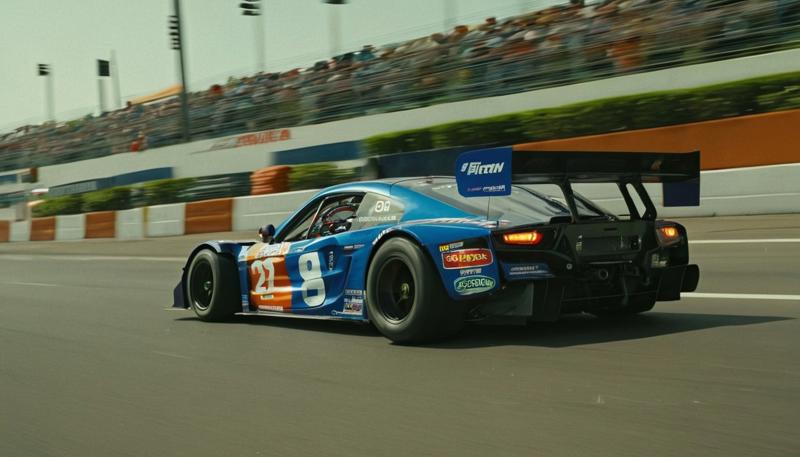
Pedestal shot
A pedestal shot is a cinematographic technique involving vertical movement of the camera—raising or lowering it while keeping the horizon line fixed. This movement provides a change in perspective, allowing filmmakers to emphasize or de-emphasize elements in the frame.
A pedestal shot can be used to reveal the environment, adjust the framing of a subject, or create visual interest by changing the viewer's perspective. This technique is achieved using specialized equipment like a pedestal or tripod with a vertical movement capability. Pedestal shots contribute to the visual storytelling process by adding variety to the composition and influencing the audience's perception of the scene.
Tilt shot
A tilt shot is a cinematographic technique where the camera is angled up or down from a fixed position, changing the vertical orientation of the frame. A tilt upward is known as a "tilt-up," and a tilt downward is referred to as a "tilt-down." Tilt shots are used to reveal or emphasize elements in the frame, offering a different perspective or highlighting details.
In filmmaking and photography, a tilt shot can be employed for various creative purposes. For example, a tilt-up might reveal a tall building or a character's imposing presence, while a tilt-down could unveil an interesting object or emphasize a change in the scene. Tilt shots are valuable for adding visual interest and dynamics to a composition, allowing the camera to explore the vertical dimension of the subject.
Tracking shot
A tracking shot, also known as a tracking sequence or tracking shot, involves a moving camera that follows a subject or travels alongside it. This technique is often achieved using specialized equipment such as a dolly, steadicam, or other tracking devices. The purpose of a tracking shot is to provide a smooth and dynamic perspective, creating a sense of movement and continuity within a scene.
Tracking shots are widely used in filmmaking to follow characters through a setting, showcase action sequences, or guide the audience's attention smoothly across a landscape. The controlled movement of the camera in a tracking shot can contribute to the storytelling process, offering a more immersive and visually engaging experience for the viewer.
Tracking Shot of a race car on the street, driving at high speed, highly detailed, Fujifilm XT-4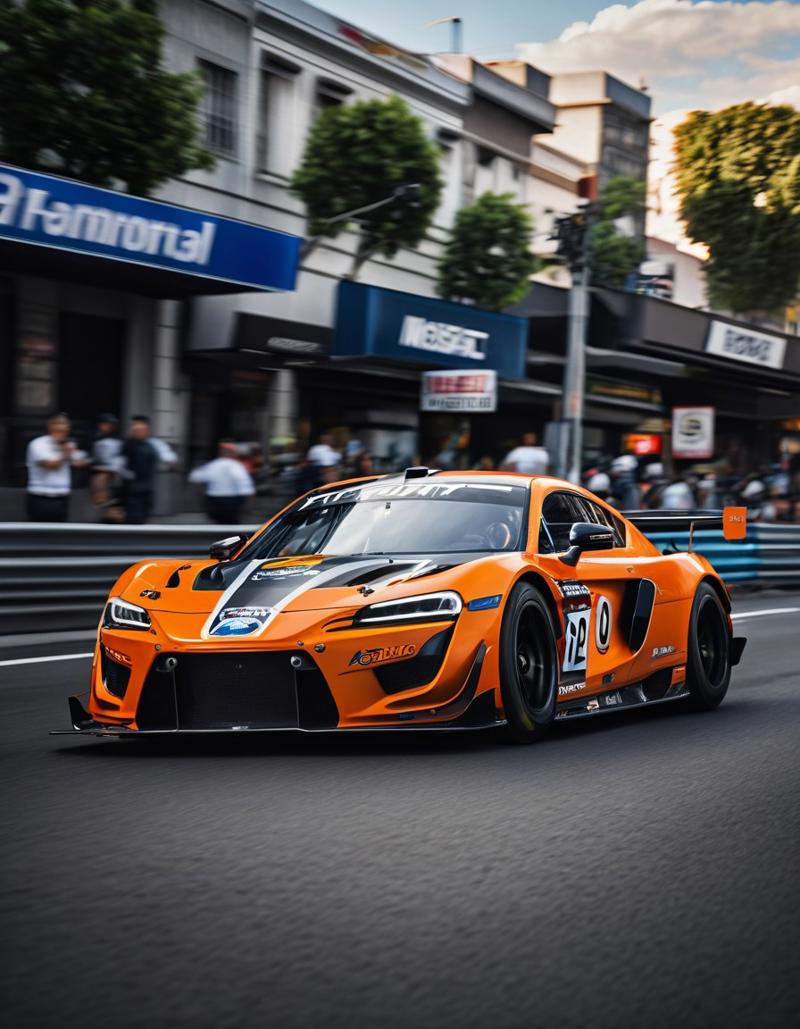
Trucking shot
A trucking shot is a cinematographic technique that involves moving the entire camera laterally, parallel to the ground, to follow a subject or reveal elements within a scene. Unlike a dolly shot, which typically moves the camera towards or away from the subject, a trucking shot involves horizontal movement.
Trucking shots are often used to track characters as they move within a scene, showcasing their interactions or navigating through an environment. This technique adds dynamism to a sequence and allows the audience to follow the action seamlessly. Trucking shots are achieved using various equipment, including wheeled platforms, tracks, or other camera support systems that facilitate smooth lateral movement.
Whip pan
A whip pan, short for "whipping pan," is a rapid and abrupt horizontal camera movement from one point to another. Unlike a smooth pan, a whip pan involves a quick motion, creating a blurred transition between two shots. This technique is often used for stylistic or dramatic effect in filmmaking.
Whip pans can be employed to convey a sense of urgency, energy, or surprise. They are frequently used in fast-paced sequences or to add dynamic transitions between scenes. The abrupt nature of a whip pan can create a visually striking effect, drawing attention to the sudden change in focus or perspective within a narrative.
Whip Pan photo of a race car on the street, driving at high speed, highly detailed, Fujifilm XT-4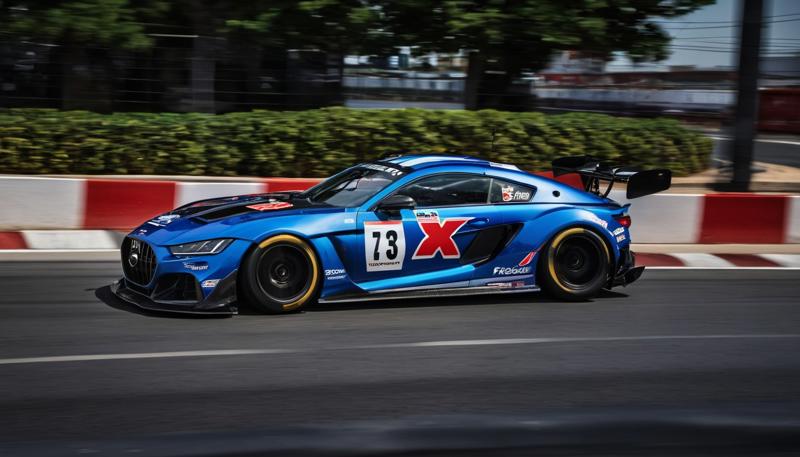
Zoom shot
A zoom shot is a cinematographic technique where the camera's lens focal length is adjusted during the shot to change the framing of the image. Unlike physically moving the camera closer or farther away from the subject (which would be a dolly or tracking shot), a zoom shot involves adjusting the lens to make the subject appear larger or smaller within the frame.
Zoom shots can be used for various creative purposes, such as emphasizing a character's reaction, revealing details, or creating a sense of compression or expansion in a scene. It's a versatile tool that allows filmmakers and photographers to manipulate the visual dynamics of a shot without physically repositioning the camera.






